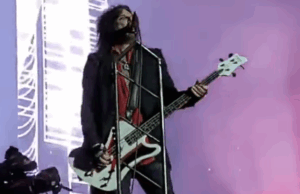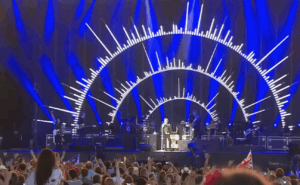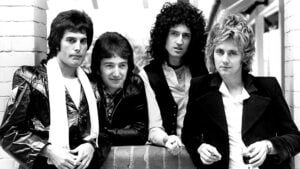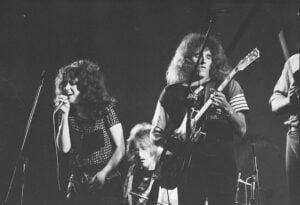5 Deep Purple Songs That Sound Like Every Other Deep Purple Song

via Deep Purple Official / YouTube
Deep Purple helped shape hard rock in the early 1970s with their loud riffs, organ solos, and strong vocals. While they had plenty of hits, some of their songs followed the same patterns. Fans noticed the band often reused similar structures, tempos, and styles. That doesn’t mean these songs are bad—they still rock—but they sometimes sound too close to one another. The focus on heavy guitar, fast drumming, and dramatic organ parts became a formula the group used again and again.
“Fireball”
“Fireball” was the title track from Deep Purple’s 1971 album. It starts with the sound of an air conditioner, then launches into a fast-paced rhythm led by Ian Paice’s drumming. Ritchie Blackmore’s guitar work and Jon Lord’s organ playing push the track forward in a way that feels familiar to other Purple songs.
The song has a similar structure to “Speed King” and “Highway Star.” It follows the same loud-quiet-loud pattern the band liked to use. While the energy is strong, it doesn’t bring much new to the table and blends in with many of their other rock tracks.
“No No No”
From the Fireball album, “No No No” features a slow, bluesy intro that turns into a heavier groove. The band uses wah-wah effects on the guitar and a rolling bass line, but the vocal delivery and rhythm fall into patterns already heard on other tracks from the same period.
The song runs over six minutes, using long solos and repeated riffs that feel a lot like what’s found on earlier albums. It doesn’t try to change the formula, which makes it sound like a mix of older Deep Purple songs without offering much difference.
“Rat Bat Blue”
“Rat Bat Blue” appears on the 1973 Who Do We Think We Are album. It’s built on a heavy riff and loud organ parts, with lyrics that don’t stand out much. Ian Gillan’s voice follows the usual highs and shouts found in their other mid-tempo tracks.
The structure and style make it feel like a leftover from Machine Head. The guitar solo sounds great but doesn’t push the band’s sound in a new direction. Even though it’s fun to listen to, it still feels like something the group had already done several times before.
“Into the Fire”
“Into the Fire,” from the In Rock album, is built around a chunky riff and a repetitive chorus. The vocals are stretched over the guitar in a way that became typical for Deep Purple during this time. It has a heavy rhythm section but not much variation throughout the song.
This track sounds like it could’ve been placed on multiple Deep Purple albums and still fit without much change. The song repeats its main theme too often and doesn’t have any surprise shifts or new ideas to set it apart from others in their catalog.
“Space Truckin’”
“Space Truckin’” closes out the Machine Head album with high energy and simple lyrics. The rhythm is straightforward, and the song relies on a repeating riff, which gives it a similar feel to other tracks like “Smoke on the Water.” The space theme in the lyrics doesn’t change the overall structure.
The organ and guitar solos are exciting but follow the same setup used in other songs. Deep Purple plays it safe here, using a formula they knew worked. While it became popular, “Space Truckin’” still sounds very much like several other Deep Purple rockers from the same era.

















